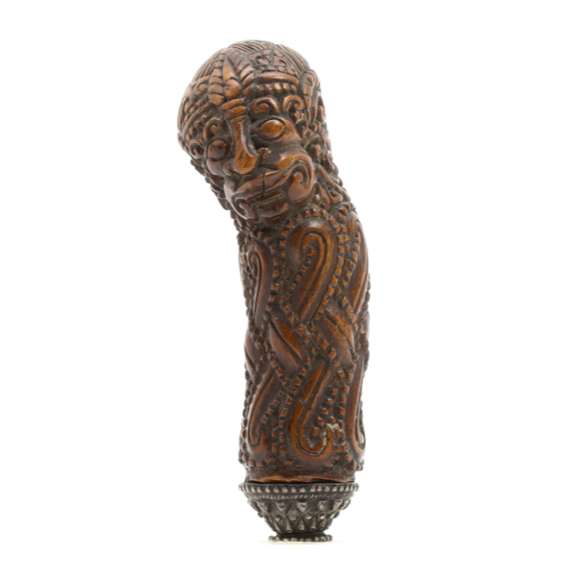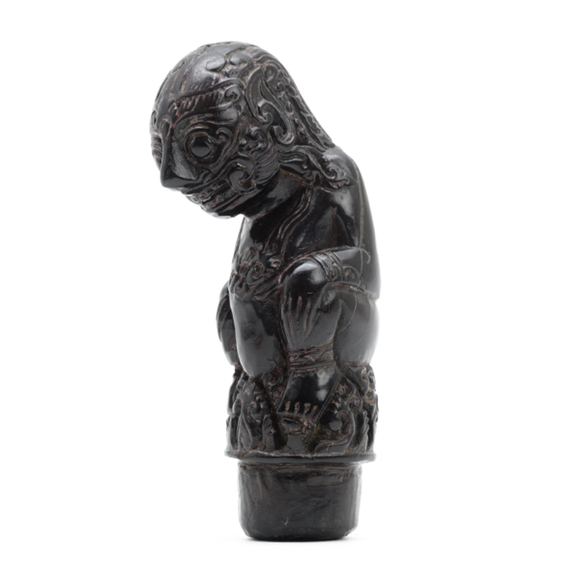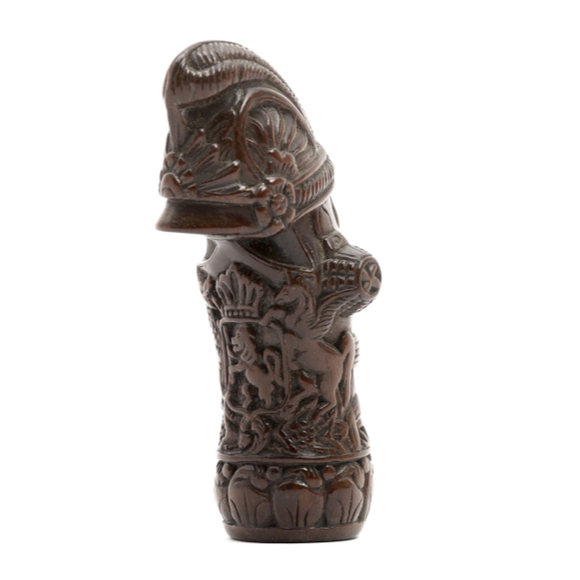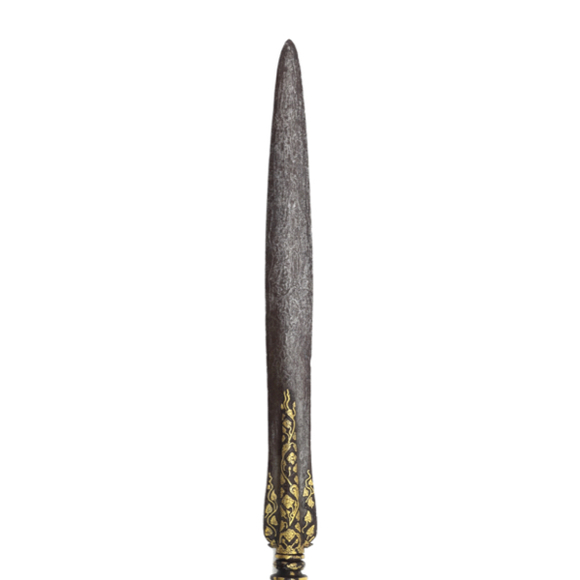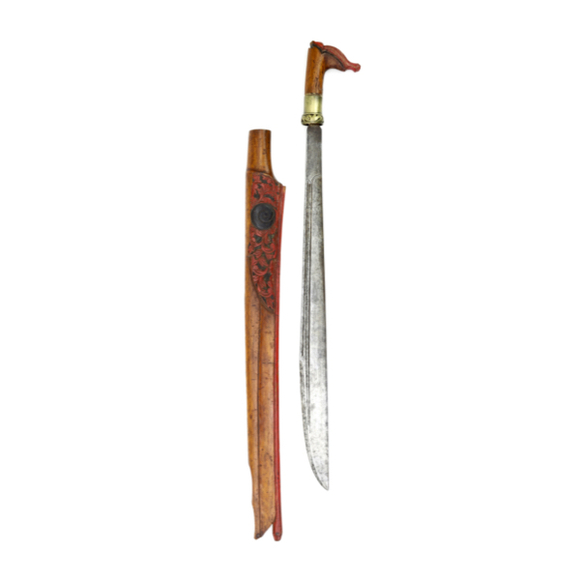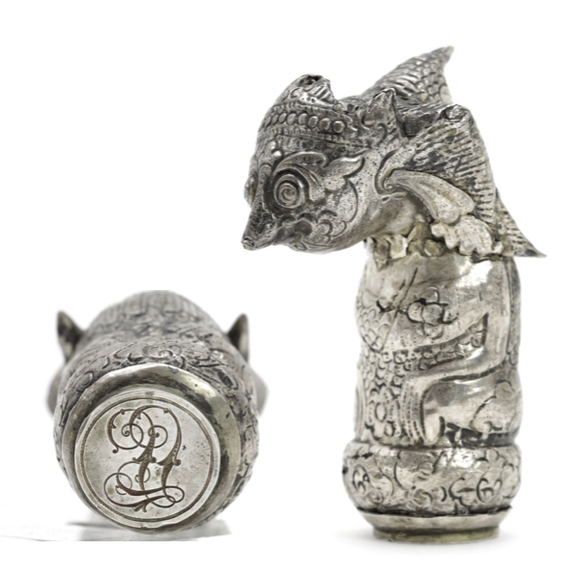Language: Malay
Source: Frederick Boyle; Adventures among the Dyaks of Borneo. 1863.
Description
The parang latok is one of the more curious weapons from Asia. The blade is straight and with a pronounced widening from a narrow base to a rather wide tip. Its defining feature is a sharp bend at the base of the blade.1
From a functional perspective, the bend in the hilt makes for a blade that hits later in the swing, so it has more time to accelerate. So its strike is not fast but harder than that of a conventional sword.
It was used by the people of Sarawak, northern Borneo.
Notes
1. Frederick Boyle; Adventures among the Dyaks of Borneo. Hurst and Blackett. 1863. Pages 35 and 117-119.
In the literature
The "parang latok " is a weapon peculiar to the Malays, who use it with great skill; but its singular shape, incomprehensible at first sight, and at times objectionable, has effectually barred its popularity among foreign nations. The blade is about two feet long and a couple of inches broad at the point, from which it narrows down to the junction of the hilt, where it becomes square, and half an inch thick. The hilt is bent at an obtuse angle to the blade, which makes the instrument exceedingly awkward to handle; and, in fact, when used for
chopping wood or any peaceful purpose, the grasp is taken at the bjend and not at the hilt.
In war, however, the full length of the parang is used, and it must be evident, on reflection, that its cut will be very severe, since, in consequence of its peculiar bend, the edge is involuntarily drawn through the Wound from hilt to point, thereby enlarging and deepening the gash. Like the kris, the "parang latok " is falling into disuse for warlike service, for sword-blades can be imported so cheaply from Europe, and are found so convenient, that they are generally preferred.
A Malay, however, is as much embarrassed by the roomy hilt, which we consider
most serviceable, as an Englishman is with the tiny, cramped grasp in which the native delights. The race is naturally small-handed, but their sword-hilts seem too little for the fingers of a child. It is found, however, that this is not the case; and I have met with several Indian officers who considered the native system to be the most effective. The hilt is made of brass, with a short, thick cross-guard, from which depends a graceful sword-knot of crimson silk, with a silver mounting. The sheath is of wood, formed in two pieces, wonderfully fitted together, and decorated with silver. English or German steel is not esteemed so highly by them as that of their own production, and not, I think, without some reason. The metal of which valuable weapons are made is said to be manufactured from files, which are imported in large quantities. It is certainly tougher than our ordinary sword metal, and sometimes more highly tempered. In several instances, our hunting kniveswhich professed to be the finest steel possible, broke and gapped, when the native parangs were not in the least injured.
In executing a criminal with the "parang latok," the condemned man is made to kneel down on the ground, and the headsman, standing at his side and a little behind him, generally succeeds in striking off the head at one blow. I have in my possession a very heavy parang, with which, at an emergency, Dout, a policeman at Kuching, who has distinguished himself on more than one occasion, struck off the heads of two criminals with two successive blows, standing between them as tbey knelt on the ground.
Upon another occasion, when the howling of the large Chinese dogs in the Bazaar disturbed the proceedings in the Court House, Dout dashed into the road, armed with the same weapon, and with one blow cut in two the first of the noisy animals that was so unfortunate as to encounter him.
-Frederick Boyle, Adventures Among the Dyaks of Borneo, 1865.
Pages 117-119.

